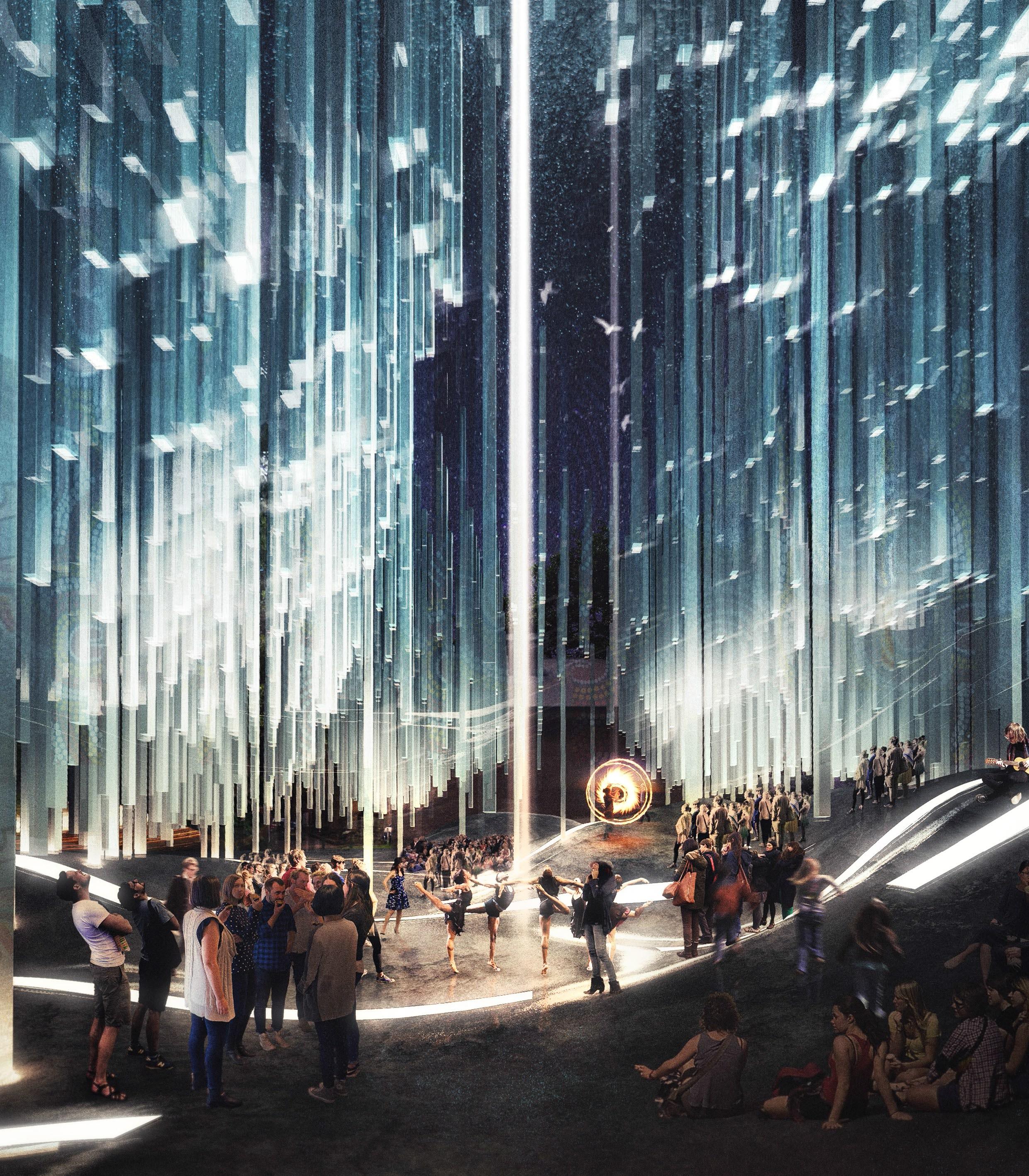
2 minute read
P R O T O C O M P U T A T I O N A L THINKING: HACKING UTZON
BDES 3027
P R O T O C O M P U T A T I O N A L THINKING: HACKING UTZON
Advertisement
Catherine Lassen Rizal Muslimin
Tutors: Ross Anderson Francois Blanciak Tia Chim Rachel Couper Ivana Kuzmanovska Catherine Lassen Jennifer McMaster & Sean Akahane-Bryen Raffaello Rosselli Thomas Stromberg
Between the digital and the physical, students’ close studies of Utzon’s architecture provided an opportunity for computational design thinking from first principles. Design discipline evident throughout his work spans numerous scales, extending for example, from broad organisational decisions to detailed prefabrication ambitions. Conceived as parametric, thoughts that inform geometry can be seen as connected to larger attitudes towards the program and structure, including performance requirements such as acoustics or light control. Beyond the building, this extends to a response incorporating urban or landscape conditions. His methodological process, framed as internally coherent or rule governed, offered a context via parametric design tools from which to imagine an external performance space. Behind the Mint facing Hospital Road, the project further accommodated a small associated gallery and archives.
Students’ material and programmatic speculations proposed connections between the dense city grid of Macquarie Street and relative urban void of the Domain, as well as opportunities to investigate an architecture addressing the Domain landscape and the Art Gallery of NSW. Proposals were encouraged to suggest or represent contained content in experimental ways.
Particular attention was paid to the conventions of architectural representation to doubly generate as well as conceptually clarify design possibilities. Through the iterative re-drawing and re-making of what one ‘sees’ and ‘reads’ students were asked to isolate particular components or strategies, leading to abstracted yet precise depictions of studied architectural and urban conditions. Structural, technical and material thinking was encouraged in alignment with students’ design priorities and with a studied historical and cultural awareness. Part and whole were seen as continuously interrelated. Depth of design development was promoted via a dual emphasis: early analysis of exemplary architectural (proto computational) thinking coupled with intensive, projective exploration. Digital modeling and strategic clarification via a schema offered extended tools for establishing an internally coherent framework in addition to imaginative testing of multiple output variations and unforeseen modes of physical production.
Parametric schemas promoted explicit representation to communicate intuitive-driven designs and toward realised intentions. Speculative architectural thought conceived in parallel with multiple modes of making helped frame intelligible, inventive, doubly digital and material propositions.


